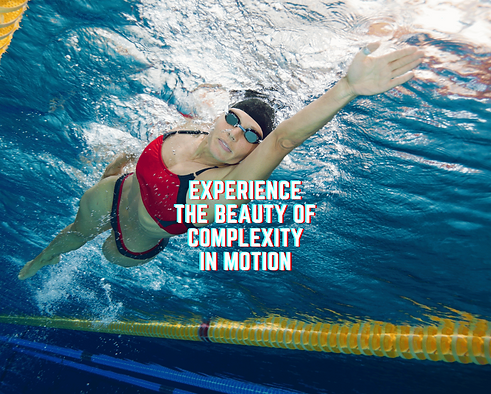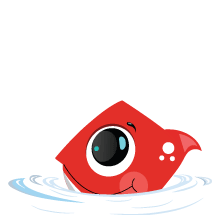HOW DO WE DO IT?
Swimming involves the integration of movement and physical forces. Swimmers employ precise kinematic movements to overcome the resistance of water and push themselves in a forward direction. Every individual stroke, such as a freestyle, possesses distinct movements. This is dictated by Newton's Laws of Motion, which establish the principles of motion. Until an external force applies to an item, it will continue to move in the same direction and at the same speed, according to the first law of motion. This principle explains why a swimmer is able to glide through the water after pushing off from the wall. The second law of motion elucidates the relationship between force and acceleration. Specifically, it states that the greater the force exerted by a swimmer, the higher their speed of movement. The third rule of motion, known as action-reaction, elucidates the mechanism by which a swimmer exerts force on water, causing the water to exert an equal and opposite force, thus propelling the swimmer forward. Through comprehension of these principles, swimmers can enhance their technique and optimise their efficiency.
NURTURING SWIMMERS
Where Every Swimmer Shines
At KINEMATICS The Swim Stroke Studio, we believe in fostering a consistent learning environment that caters to each child's unique development. We go beyond just teaching strokes; we delve into understanding your child's learning style by focusing on aspects like joint attention, problem-solving, self-regulation, and motivation. This holistic approach ensures a positive learning experience that fuels their interest, improves participation, and empowers them to achieve their swimming goals.


THE FRONT CRAWL
A.K.A FREESTYLE STROKE
In the Kinematics of
freestyle, or front crawl, swimmers alternately windmill their arms and flutter kick their legs. This propels the swimmer. Arm and leg propulsive force depends on swimmer body posture, stroke style, and generated power. The swimmer faces drag and turbulence, which oppose the propulsive force. A tight, streamlined body position reduces drag and turbulence, allowing the swimmer to maximum propulsive force.
THE BACK CRAWL
A.K.A BACKSTROKE
In the Kinematics of
backstroke or back crawl swimmer lies on their back and alternates arms in a windmill motion like freestyle while kicking their legs upward. Like freestyle, the arms and legs provide propulsive force, but surface drag and wave drag affect the swimmer. A tight, streamlined body position and minimal splashing and churning reduce wave drag for swimmers.


THE BREAST STROKE
In the Kinematic of
breaststroke swimmer rotates their arms while kicking their legs outward. Propulsive force pulls the swimmer forward, yet body position and water displacement create significant resistance. The swimmer can reduce resistance, drag, and turbulence by keeping their head down and arms streamlined and minimising splashing and churning.
THE BUTTERFLY STROKE
In the Kinematic of
butterfly, swimmers rotate their arms and undulate their hips in a dolphin motion. The swimmer exerts substantial propulsive force, while the water resists the body's undulating movement. Maintenance of a tight, streamlined body position, head down, arms streamlined, and minimal splashing and churning of the water helps reduce resistance, drag, and turbulence.


THE STARTS
In the Kinematic of
a swimming start are designed to maximise horizontal velocity for a powerful launch. This includes a strong push-off from the block, a streamlined flying phase for distance, and an angled water entrance to reduce drag and smooth the transition to underwater swimming.
THE TURNS
In the Kinematic of
competitive swimming, turning efficiently is key. Kinematics describe the motions involved. Swimmers approach the wall streamlined, then touch with spread fingers for a powerful push-off. They tumble or flip tightly to stay streamlined, before forcefully kicking off the wall and gliding underwater. Finally, they break the streamline with minimal drag to resume swimming. These core kinematic elements apply to all swimming strokes, with variations depending on the specific technique.


THE WORLD AQUATICS
Competitive swimming
Our innovative Kinematics Stroke Correction programme does more than merely improve your child's swimming technique. We introduce them to the fascinating world of competitive swimming via World Aquatics. Understanding the organisation behind big swim meets and world records helps students develop a greater appreciation for the sport and the dedication required to compete at the highest levels. This understanding motivates them during stroke correction drills, as they relate their practice to the global stage!


























